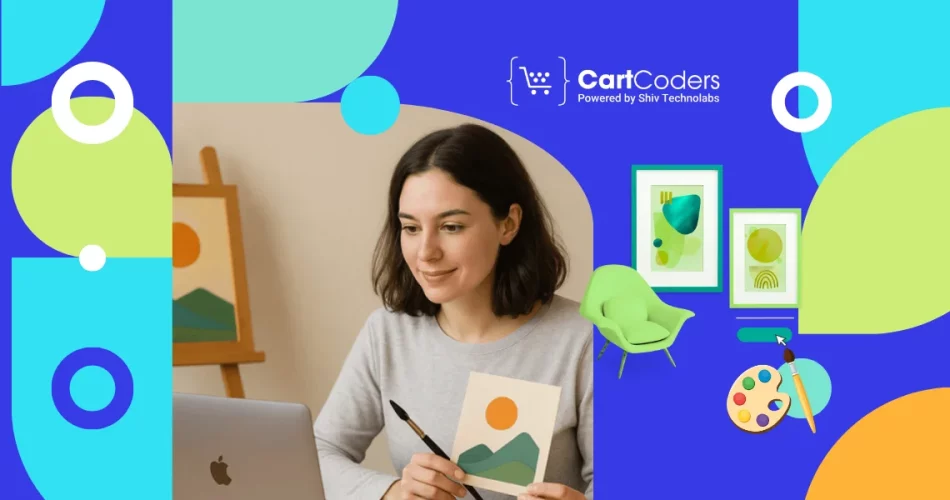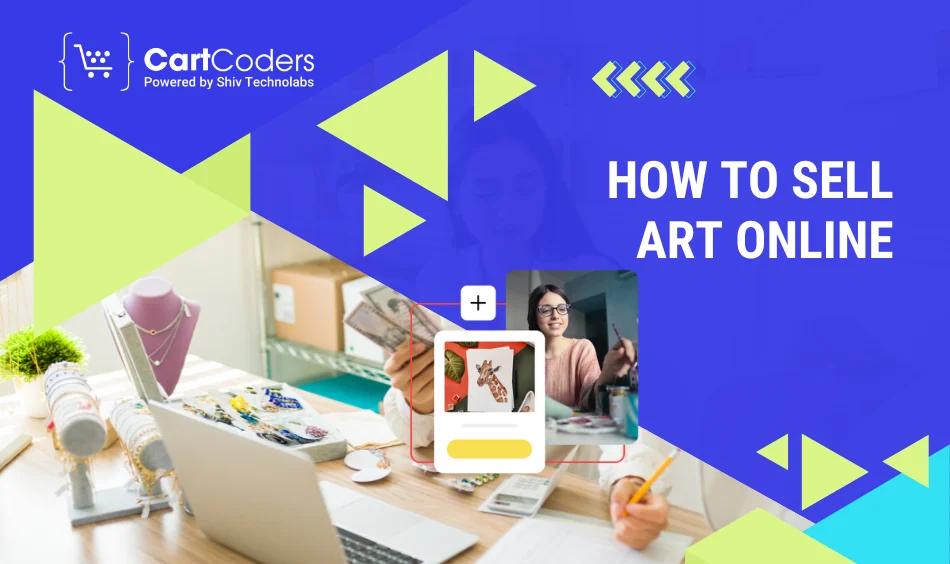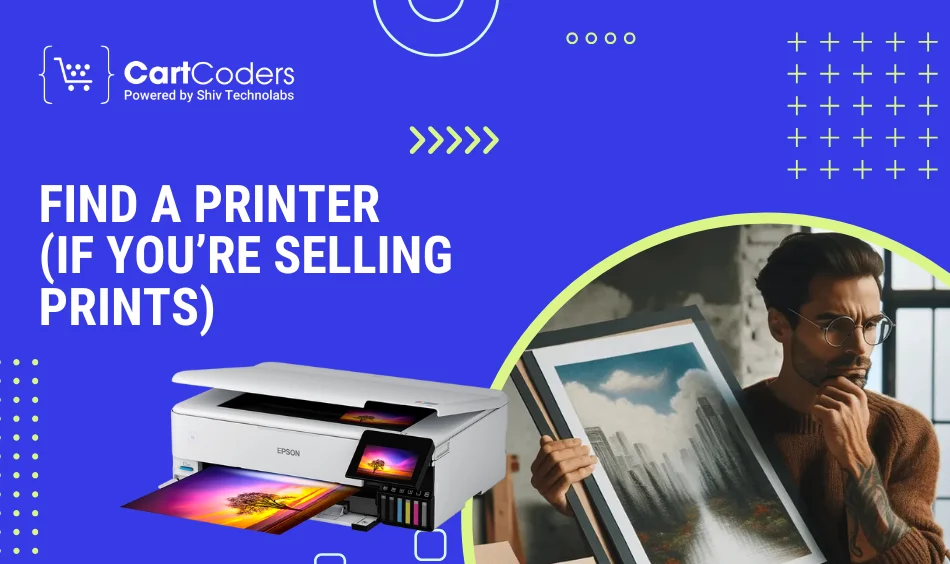Custom Engagement Solutions
Unlock tailored solutions with a free, no-obligation strategy session.
Expert Developers & Engineers on Demand
Scale Your Team with Skilled IT Professionals
Expert Guidance for Digital Transformation

You make art. People like it. Now you’re wondering if you can sell your art online and make it work.
The good news? You can. And no, you don’t need a huge following or a perfect store to begin.
This guide breaks down what matters: what to sell, where to sell it, how to price it, and how to start without getting overwhelmed.
Let’s keep it simple and get your art in front of people who’ll buy it.
Selling art online isn’t just for full-time painters or designers. It’s become a practical path for anyone who wants to make money from their work, whether you do it full-time, part-time, or on weekends.
You don’t need to wait for a gallery to notice you. You can share your work directly with people who love your style, wherever they are. And you don’t need a big budget either. A basic setup and a few good photos can get you started.
Here’s why selling art online makes sense:
More artists are giving it a shot because it’s doable. You don’t need to be famous. You just need to show up, put your work out there, and let people buy it.

You don’t need a perfect setup or a big launch. You just need to start small, stay consistent, and move one step at a time. Here’s how to do it in a way that works, and doesn’t drive you nuts.
Before anything else, figure out how you want to make money from your art. There’s no single “right” way — it depends on your time, tools, and what feels right to you.
Here are a few options (with pros and cons):
| Model | What It Means | Good If… |
| Sell originals | One-of-a-kind artwork | You want to charge more per piece |
| Sell prints | Reproductions in various sizes | You want repeat sales from one design |
| Digital downloads | Buyers get instant access, no shipping needed | You prefer hands-off income |
| Commissions | Custom artwork based on requests | You enjoy working closely with clients |
| Licensing | Businesses pay to use your art | You want to earn without physical sales |
Start with one or two. You’ll figure out what suits you best once sales start rolling in.
Let’s keep this part simple. What are you most excited to offer right now?
Try this quick filter:
If yes, that’s your starting point. You don’t need a massive catalog — just a few strong listings done right.
Photos can make or break your first sale. So this step matters more than people think.
Let me give you a checklist:
✅ Shoot in natural light (early morning or late afternoon is best)
✅ Use a plain background — white, wood, or neutral walls
✅ Get close-ups of detail or texture
✅ Show the back if it’s a canvas or has signature work
✅ Use lifestyle mockups (like your art above a couch) to help buyers picture it in their space
✅ Scan flat work at high resolution (300 DPI or more)If you’re selling digital downloads, include previews and usage examples. A well-presented file feels more valuable, even if it’s just pixels.

If you’re offering art prints, the print quality matters. A poor print can make great work look average. You don’t want that.
Let’s break down your options:
Option 1: Print at home
Good if you’re just starting and have a quality printer. Keep in mind, you’ll need to invest in fine art paper and ink. Also, consistency might be an issue if you’re printing in batches.
Option 2: Local print shops
Great if you want to check the color and paper in person. Ask for samples first. Don’t be afraid to try a few shops before settling on one.
Option 3: Online print-on-demand services
Print-on-demand services (like Printful, Gooten, and Gelato) handle printing and shipping for you. You upload the artwork, set prices, and they do the rest. It’s hands-off, but you earn less per sale.
Quick tip:Always test your prints before selling. Order one or two samples and check everything — color, sharpness, finish, packaging.
You don’t need a full “branding strategy.” You just need to look consistent and feel genuine.
Think of it like this: if someone sees your art online, can they remember your name, style, and tone? That’s branding.
Keep it simple:
You’re not trying to impress an art director. You’re trying to help buyers feel like they know you.
Pricing feels hard for every artist at first. But it doesn’t have to be complicated.
Here’s a basic way to think about it:
Materials + Time + Fees + Margin = Price
Let’s say it takes you 4 hours to make a piece. Your canvas and paints cost $40. Your platform takes 10%. You want to earn $100.
That gives you:
If that sounds like a lot, you can offer smaller pieces or prints at lower price points. That way, you cover different types of buyers without undercharging yourself.
You don’t need a big, fancy site to start selling. You just need a clean layout, a few great product pages, and a way for people to pay you.
If you want full control:
Go with Shopify. It’s made for online stores, works well for art sellers, and you can customize your store however you want.
If you want a quicker setup:
Try Etsy. You won’t own the platform, but you’ll get access to people already browsing for art.
Your store should have:
Keep it easy to use. The fewer clicks it takes to buy something, the better.
Your store won’t get traffic on its own — at least not right away. You need to guide people there.
Start with this simple rhythm:
You’re not begging people to buy. You’re inviting them to follow your journey.
Helpful idea:
Add a “thank you” card in each order with your social handle and a note asking buyers to share their photos. That kind of organic reach works better than any ad.
Even if your goal is to build an online store, don’t ignore real-world opportunities. In-person selling helps you talk to buyers, get feedback, and build local connections that can support your online growth.
Here’s where you can show up:
Bring a simple setup — a few framed prints, business cards with your store link, and maybe a QR code that leads to your website. You don’t need a huge booth to make an impression.
Also, consider offering local pickup as a shipping option in your store. It’s a small thing, but it builds trust with nearby buyers.
Licensing lets someone else use your art, and you get paid for it, while still keeping the rights. It’s a smart way to earn without printing or shipping anything.
Where your art could be licensed:
You can reach out directly to brands, musicians, or publishers.
A few tips to stay safe:
Even if you only land a few licensing deals a year, they can add a nice bonus to your income, and you’re still free to sell that same piece in other ways.
So you made a sale — now what? This is the part where many new sellers panic. But shipping your art doesn’t have to be complicated or expensive. You just need a few basics and a reliable method.
Let’s break it down.
No packing needed, but:
Choose a Reliable Shipping Method
Use tracked shipping whenever possible, especially for originals. Buyers feel more comfortable when they can follow their package.
Platforms like Shopify let you print labels directly and compare rates. For international shipping, double-check customs forms and estimated delivery times.
It’s also a good idea to include:
These small touches go a long way.
When you sell art online, it’s smart to know your rights and protect your work from being copied.
Here’s what you need to know:
If someone steals your work:
Also, don’t use someone else’s work without permission — even if you “change it a bit.” When in doubt, make your own or use public domain sources.
Selling art online isn’t a sprint. Some weeks you’ll make sales. Other weeks, nothing happens. That’s normal.
The key is to keep showing up — even when it’s quiet.
Here’s what helps:
It’s easy to feel like you’re behind. You’re not. You’re building something that takes time, and that’s the only way it lasts.
Selling art is creative work. Setting up your store doesn’t have to be.
At CartCoders, we help artists build clean, high-performing Shopify stores made for art sales. Whether you want to sell prints, originals, or digital files, we build setups that support easy checkout, mobile browsing, and custom product displays.
No templates. No unnecessary plugins. Just what you need to start strong.
Want your art store without the hassle?
Contact CartCoders — and start selling with confidence.
Projects delivered in 15+ industries.
95% retention rate, building lasting partnerships.
Serving clients across 25+ countries.
60+ pros | 10+ years of experience.